Energy is fundamental to carry out most of our daily activities, especially at work, but it also represents a huge part of our annual expenses, and its impact can significantly affect the environment. The same can be said about water. There are 1000s ideas to save energy and water at work.
This article gives you 70 of the simplest big green ideas you can implement at work to achieve quick energy and water savings.
Follow the checklist ideas below to help reduce consumption and achieve the ‘Win Win’:
The list generally follow the resources hierarchies, and is based on optimized life-cycle costing principles to ensure approaches are as cost effective as possible. These ideas look to first prioritize quick wins, hearts and minds, and low cost conservation measures to reduce consumption as much as possible, before investing in significant clean efficiency technologies and renewable energy sources. Look for this symbol ($) to get an idea of how expensive it could get.
The list is split across seven category groups: Lighting; Small Power; Process Equipment (using motors & drives); Heating, Ventilation & Air Conditioning (HVAC); Transport, Water; and Low and Zero Carbon Technologies (LZC).
|

The first category area to think about is lighting. For most organizations, lighting can account for at least 15 to 20% of electricity costs. Lighting can make up as much as 50% of electricity consumption in some office areas! We all typically waste a lot of the energy consumption we use for lighting. We only need to light what people need to avoid having lights on when not required.

1. Make the most of natural light
- Daylight is a precious resource; we love it but we also waste it.
- Avoid having blinds down when not needed. Daylight blinds can enable natural light to enter the room without the discomfort of glare.
- Light tubes bring in natural light from above.
- Make sure windows and skylights are regularly cleaned.
- Savings are made by switching lights off or from dimming them down.

2. Use task lighting ($)
- We sometimes don’t realize we don’t need most of the ambient lighting we always keep on. Many areas keep all lights left on when they are being unused as we illuminate the general area.
- A simple table lamp, for example, can easily significantly reduce the amount of ambient lighting we need, by focusing on the task we are working on.
- Using task lighting can also reduce both eyestrain and our electricity bill by being able to switch off or dim down the general lighting!
- Think about what you need.
3. Reconsider lighting levels both inside and outside
- Different tasks and different people require different light intensity. Often light levels are set for the worst-case situations.
- Consider types of work being carried out and who is involved. Perhaps some spaces are being over-illuminated…?
- Try different levels of intensity to see if comfort, health & safety and productivity are unaffected or even improved.
- Don’t be afraid to take out or dim down lights – they can always be turned back on!
- Involve local management and facilities teams.
4. Carry out regular lighting maintenance
- With time, lights can become more inefficient, often by up to 30% in a matter in as little as 2 to 3 years.
- Carrying out simple and periodic lighting maintenance (cleaning lamps/reflectors/shades) can reduce energy consumption, by typically up to 15%, as well as improving the appearance of the space.
- Talk to maintenance teams about what they can do.
5. Switch off lights when leaving the room, even if it’s just for a short break
- It’s a common misconception to believe that switching lights on and off uses a lot of electricity. In reality, for example, switching off a modern fluorescent lamp for 15 minutes, and switching it on again, will save 99% in energy use!
- Introduce a switch-off policy / campaign.
- Ensure switches are clearly labelled and accessible and add in more switches if needed.
- Consider simple timeclocks when lighting is required at specific times.
- Talk to colleagues about what’s needed to make this easy for everyone.
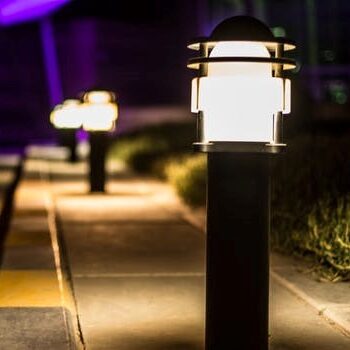
6. Recommission the lighting controls
- Many organizations end up leaving all lights all the time, including at night for perceived safety concerns, to light the way for a few cleaners or to keep the burglars out!
- However, this comes at a high cost, particularly where lighting controls already exist.
- Activating motion sensors – and optimizing the time settings and dimming levels – can still do the trick but at lower cost, turning on only when needed.
- Involve local users for continual optimization processes for maximum savings.

7. Retrofit photocells in areas with good daylighting ($)
- Photocells can be used (for exterior lighting and lighting in internal areas near windows), automatically switching them on and off, ensuring ambient daylight is used to its maximum potential - and offsetting electric lighting when possible.
- When used in conjunction with dimming controls, systems can achieve constant illuminance control using such daylight harvesting.
- Talk to facilities service providers about the best approaches.
8. Retrofit existing light fittings ($)
- Upgrade and reuse existing light fittings by replacing older style lamps with LED retrofits.
- Add additional reflectors, if possible, to help spread the light more across the room.
- You can often remove a proportion of the lamps which will also help to significantly reduce energy consumption.
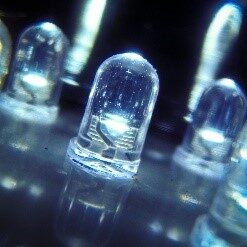
9. Replace older light fitting with more efficient technology ($$)
- Where cost effective, replacing older tungsten and fluorescent lamps with LED will typically save 40 to 80% on lighting consumption.
- Ensure you choose the right levels of color (color rendering and color temperature factors).
- LEDs also typically offer a longer life span, lower maintenance costs and other environmental benefits.
- Adding dimming controls allows more accurate light-level setting, further reducing inefficiencies.
- Talk to project investment teams about what the best approach is.
10. Install presence detectors
- Target intermittently areas such as corridors, circulation spaces and meeting rooms.
- Microwave or passive infrared sensors can switch lights on and/or off, or dim them down, by sensing the presence of people so reducing inefficiency when lights aren’t needed.
- In areas with good daylighting, using absence detection can allow people to switch lights on and then sensors will switch them off again.
- In areas that require lighting all the time, light levels can be dimmed down to a minimum setback when no one is around.
- Continually fine tune control settings to maximize benefits.
|

Electrical 'small power' includes all of the unfixed equipment and appliances that are usually ‘plugged’ into the electricity circuits of the building.
Collectively, small power consumption can account for as much as 15 to 30% of the total electricity used in an office building.
Much equipment is left on for much longer than needed.
Switching off PCs overnight and on weekends, for example, can save up to 50 to 75% of their energy use per year!
Many small ideas to saving energy across small power devices can really add up – and seeing these ideas implemented can be a very powerful influencer for everyone’s hearts and minds.
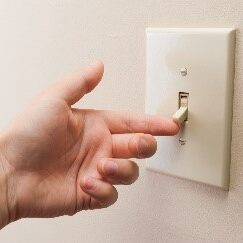
1. Small power ‘switch off’ policy
- Use a switch-off policy to involve colleagues and increase awareness on electricity consumption.
- Take advantage of ways that incentivize yourself and colleagues to switch off small power when’s it’s not required.
- Review operational requirements and reduce the number of devices where possible.
- Use switch off schedules to minimize on-time during the day e.g. in restaurants...
- Regularly talk to colleagues about what’s possible.
2. Last person out switch
- A ‘last person out’ switch can be used to ensure all operational power loads are switched off at the end of the day or shift.
- Beware this also becomes a first person in switch; it should only switch back on small power loads that are needed when the first person enters the space.
- Intermittently used equipment, on these circuits, should also be controlled in other ways.

3. Make sure IT energy saving features are enabled
- Enable standby and hibernate modes; avoid using screensavers.
- Consider employing centralized software such as NightWatchMan for more sophisticated desktop power management.
4. Centralize IT equipment hubs
- Small power equipment generates heat; dumping it into the working environment can cause overheating for building users.
- Avoid overheating by collecting together equipment in zones, that are also air-conditioned if necessary.
- This will help control comfort levels, as well as increases efficiency (compared to lots of AC systems being used).
- It may be worth it to also consider having a virtual private server to maximize hardware utilization and efficiency.
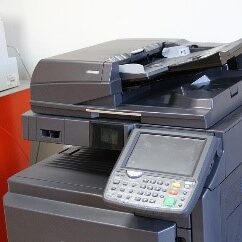
5. Centralize photocopiers in well-ventilated zones
- This will reduce areas that may require air-conditioning and prevent photocopiers from overheating to ensure they run efficiently.
- Such set-up also allows for devolved charging and access controls.
- Always aim to minimize printing, as much as possible. More and more offices are now becoming (almost) paperless.
6. Fit timers on vending machines and other local cooling units
- Use time controls to switch off vending machines if they are not required 24/7.
- Include allowances for units to reach their operating temperatures if required.
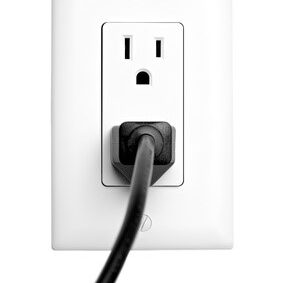
7. Set equipment standard operating procedures
- Set standard procedures so equipment is used efficiently and power requirements are turned down when possible, by everyone.
- Switch off equipment at the plug if it’s only occasionally used.
- Don’t overfill kettles.
- Communicate (and label equipment appropriately) to ensure colleagues also know how to maximize efficiency.
- Periodically review procedures. Talk to colleagues about ideas for further opportunities and improvements.
8. Ask about use of any local heating or cooling devices in use
- Talk to colleagues about why any plug-in heaters or air-conditioning are being used.
- Understand it there’s an issue with the main HVAC systems – see HVAC opportunities and ideas.
- Be careful about using blanket banning policies where there are comfort issues that can affect staff morale and their perception of energy saving environmental activity in place.
- Always aim to improve comfort as well as efficiency.
9. Regularly maintain equipment
- Carry out periodic maintenance to all equipment to avoid degradation, to spot issues that may cause inefficiencies and to fix malfunctions.
- Ensure refrigeration units are cleaned regularly with annual inspections for efficiency.
- Remove dust from printers’ air filters and other places dust easily collects, etc.
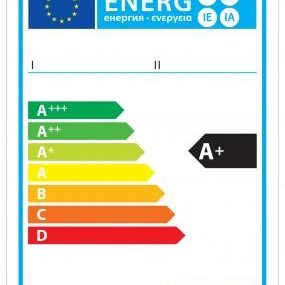
10. Equipment procurement policy
- When procuring new equipment, use polices for high efficiency equipment that also delivers best overall operational value.
- Make use of efficiency equipment labelling systems e.g. Energy Star ratings, or EU Energy Labels for energy efficiency classes.
- Consider procurement systems that restrict and standardize procurement options to higher efficiency options only.
- Restricting options also often simplifies maintenance provision too.
|

Motors and drives are used in many process applications including industrial processes, materials handling, ventilation fans, pumps, refrigeration units, compressed air systems, etc.
In many industries, electric motor drives can account for over 50% of all electricity use.
It is often possible to significantly reduce this consumption by using small adjustments and modest investment in improving efficiency.
Remember, electric motors cost a lot of money to run. They can consume their purchase price in electricity in just their first 2 to 4 months, but have a working life of over 10 years.
Compressed air can be a particularly expensive system to run, very often requiring 10 kWh of electricity to produce just 1 kWh of useable compressed air.

1. Use timers to reduce motor running times
- Simple timers can be used to automatically switch on and off all types of motors.
- Use a motor running schedule to discuss timings with colleagues who best understand the operating needs of the system.
- Routinely challenge operating times to reduce consumption.
2. Switch compressors off when possible
- Keeping air compressors running, even if at minimum levels, can typically consume 20 to 70% of their full load power.
- Rethink operational practices to minimize the operating time requirements for compressed air and switch off compressors when not in use.

3. Routinely carry out inspections for leaks to avoid unnecessary waste
- Compressed air is very expensive; air losses can be as much as 40 to 50% of the generated output.
- Water leaks can cause significant damage.
- Ventilation system leaks can go unnoticed for years.
- Routinely, checking for any leaks can prevent losses.
4. Carry out regular maintenance for motor systems
- For maximum system performance, carry out planned cleaning and other preventative maintenance procedures for motors and their application systems.
- Reduce any unnecessary throttling by fixed dampers and valves and other pressure drops in the system.
- Regularly change filters and ensure optimum operating temperatures are maintained.
- Ask advice from specialist maintenance partners.
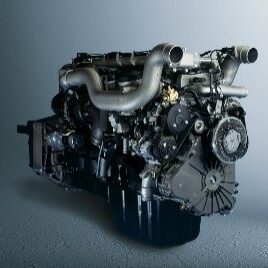
5. On-demand motor system set-ups and controls
- Continually review operational requirements on motors and associated inefficiencies.
- Consider and try out new ways to ensure they are used more on-demand.
- Significant savings can be made by challenging current set-ups.
- Discuss opportunities with operations colleagues and trial possible ideas.
6. Reduce operating pressure in line with demand
- Operating pressures for many systems are usually determined at design stage based on assumptions; for compressors, for example, this is commonly fixed around 7 bar (100 psi).
- Continually challenge the pressure set-points, based on actual requirements to achieve energy savings. Consider all end users.
- Try out reducing operating pressures, a little bit at a time, and assess the impacts on overall service and performance. Adjust set-points based on the results made.
- Reducing a compressor operating pressure by 1 bar, for example, can reduce power consumption by up to 15%.
- The same opportunities often apply to pressure controlled ventilation systems.

7. Target oversized motors ($)
- Motors and compressors are the most efficient when operating at full load.
- If permanently lightly loaded, consider switching to permanent star connector or fit a smaller motor.
- Consider adding in a smaller provision to supply the majority of the load; this could be run in conjunction with the oversized motor to limit its (inefficient) use.
8. Replace belt driven drives with direct drives ($)
- Direct drives can be more efficient than belt drives as there are less moving parts; more parts can lead to higher energy costs and more maintenance requirements.
- If you have belt drives, look at ways of reducing friction and the energy consumption penalty.
- Discuss options with a specialist supplier.
9. Implement a motor replacement policy
- Fitting High Efficiency (IE2) or Premium Efficiency (IE3) motors can reduce energy consumption by up to 5%, compared to standard new motors.
- Only rewind motors when absolutely necessary, as this practice often reduces efficiency.
- Discuss options with a specialist supplier.

10. Add motors controls to better match (varying) demand ($$)
- Variable speed drive (VSD) systems can control motor speed to help better match motor power to varying demand.
- Reducing the speed of a pump or fan by 20% can halve its running cost.
- Consider use of multi-speed motors too, if appropriate.
- EC plug fans can also offer a modular replacement options, using modular smaller motors, which can be effectively controlled to match demand.
- Set up and continually optimize and improve the controls to make the most out of any VSD (or other) investment.
- Discuss options with a specialist supplier.

|
Heating, ventilation and air-conditioning (HVAC) systems are usually the largest energy consumers for many organizations.
Good management practices can ofetn find many opportunities to reduce HVAC consumption.
Look to make improvements for better comfort as well as reduced energy to deliver the ‘Win Win’.
For example, if rooms are being overheated, reducing room temperature by 1°C could still maintain good comfort levels while cutting heating bills by as much as 10%!
HVAC costs can also easily increase by 30% if the systems are poorly operated or maintained.
Continually look for ways to optimize and improve system performance.
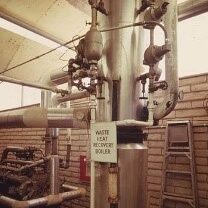
1. Consolidate operational activities and control HVAC in zones to match
- Design your operations so activities with different HVAC requirements are in groups in HVAC system zones e.g. corridors, offices, warehouse areas, etc.
- If consolidation means HVAC zones become unoccupied, set systems to minimum operational settings
2. Check (and upgrade $$) for thermal insulation levels and draughts
- Inspect plantrooms for missing thermal insulation on boilers, cooling systems and associated pipework; pay particular attention to joints and valves which can be ‘energy loss’ hot spots.
- Thermal cameras can also be used to check for leaks around windows, air gaps and gaps in good insulation levels within building cladding systems.
- Make sure heated or air-conditioned spaces are adequately thermally insulated from unoccupied spaces.
- Use blinds and window coverings at night to minimize heat loss.
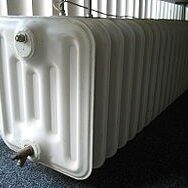
3. Check for any local obstructions to HVAC system performance
- Heating equipment, for example, can be efficient only when given the correct space to be able to irradiate heat evenly.
- HVAC outlets and grills can be obstructed by busy shelves or pieces of furniture, preventing optimum functioning.
- Use walk-around checks to make sure this is not the case, and make the necessary adjustments to fix any problems that are found.

4. Optimize thermostat settings
- Many of us often open windows to cool down overheated rooms.
- Many areas end up being uncomfortable for many as temperature is often set to appease (complaining) individuals.
- Compare space temperatures with what the majority of colleagues think about the temperature of their working environment.
- Review local thermostats and thermostatic radiator values (TRVs) to improve local control of temperature and discuss with local users how best to control adjustments in temperature for everyone.
- Ensure there are dead-bands between heating and cooling operating set-point temperatures to avoid any simultaneous heating and cooling in the same space.
5. Operationally continually review HVAC run timing and settings
- Building management systems generally include operational system time schedule control, with other controls such as optimum start/stop control, sequence and load control of boilers and chillers, weather compensation, economy or enthalpy control, etc.
- From an operational perspective, continually review and make good use these precious controls for efficient energy management.
- Continually challenge the times the system is operating, particularly during unoccupied periods (on weekends, at night, etc.)
- Trial reducing the system use during occupied periods – for example, a building’s natural thermal flywheel affect can mean the HVAC systems can be temporarily switched off in the middle of the day without compromising comfort levels.
- Switch off, or turn down, the system settings in unoccupied buildings when possible.
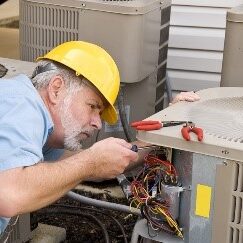
6. Use maintenance practices to continually optimize and improve HVAC system performance
- Conduct planned preventative maintenance requirements for HVAC systems, and confirm legal requirements are being met.
- Put in maintenance processes to continually check, challenge and improve system controls settings and performance.
- Review locations of control sensors so they are not adversely affected by other influences.
- Challenge whether air-flows are working and are controlled in an effective manner.
- Check system radiators that they are working effectively.
- Link operational requirements with maintenance practices – discuss opportunities with service partners.
7. Consider relaxing humidity control
- Tight humidity control can be expensive.
- Review humidity requirements and challenge system settings to match.
- Trial ways to reduce humidity control; check for feedback from system users.
- Many buildings have dispensed with their non-critical humidity control systems in recent years.

8. Replace old air filters with modern versions
- Dirty or clogged filters will increase fan power costs as well as causing poor filtration with possible consequent hygiene and health issues.
- Time optimum filter replacements, taking into account energy costs.
- Consider retrofitting for high-efficiency low loss filter systems – reduced energy consumption is achieved by controlling the fan motors to match demand.
9. Recover (and install $$) HVAC system waste heat
- Ensure existing heat recovery controls are working effectively, e.g. for air recirculation systems.
- Look for opportunities to install additional heat recovery systems to recover waste heat ejected through exhaust air.
- When upgrading systems, specify air conditioning systems equipped with heat recovery.
- Discuss opportunities with building services suppliers.
10. Upgrade old inefficient HVAC plant ($$)
- Newer technology offers better performance efficiency through reduced system losses.
- Review options that use low carbon and renewable greener energy supply, compared to upgrading or refurbishing the existing system/technology for better performance.
- Check upgrade works for compliance with local legislation requirements.
|

Freight and transport are fundamental parts in the supply chain of many businesses, most of which is done on the road.
Besides having a remarkable impact on a company’s expenses, road transport is also the sector responsible for about 25% of OECD countries’ greenhouse gas emissions.
There are often many simple ways, requiring different levels of commitment or investment, to reduce costs and risks associated with transport.
Many green ideas will also help to be safer on the road, too!
1. Avoid the trip
- Not every trip is always necessary.
- When possible, try solving matters over the phone, or meeting through online conference software.
- Avoiding the trip is the best way to save from it.

2. Improve route planning
- Try to make the best out of one trip by planning the optimal route to minimize fuel consumption.
- Take into account schedule, traffic, speed, road type, distance, etc.
- More efficient route planning means energy and money savings.
3. Use cruise control
- While in the highway, the cruise control system can set the vehicle to go at a constant velocity to use less fuel.
- Cruise control prevents otherwise unavoidable accelerations/decelerations that will consume more fuel.

4. Adopt small techniques to reduce fuel consumption
- Reduce vehicle weight, keep windows closed, use less air conditioning, remove roof racks (to make the car more aerodynamic), coast when possible, avoid idling, etc.
- These are all minor adjustments to adopt while driving to minimize fuel consumption.
- Encourage all colleagues do the same.

5. Set up a training program for drivers
- Poor driving behaviors can increase fuel consumption by 20%.
- Raise awareness, help colleagues to be safer on the road while reducing carbon emissions.
- Driver training can significantly reduce fuel costs and related emissions.
6. Maximize the transported load
- Boost overall transport productivity by maximizing the load you take.
- Plan logistics to combine as many trips as possible into one trip, and never waste one journey.
- Talk to colleagues to see if it’s possible to combine loads to save a trip.

7. Regularly check your tires
- Tires are extremely important for the safety and efficiency of the vehicle.
- Change tires according to the season, as necessary.
- Learn to identify signs of tire wear, check for the correct pressure, implement periodic tire rotation and balancing, as well as ensuring good wheel alignment.
8. Improve fleet utilization
- Improve utilization by recording data that tracks where each vehicle is going, distance traveled, drive time etc.
- Fleet management software can be very helpful in collecting information, in real time and target any inefficiency on the road to improve fleet performance.

9. Carry out periodic vehicle maintenance
- Flat or worn out tires, old engines, dirty air filters, incorrect engine oil… are some of the problems can reduce your fuel economy.
- By performing periodic checks and by taking care of the vehicles, unnecessary fuel consumption can be avoided.
10. Replace old vehicles with newer, more efficient ones ($$)
- When making a new purchase, try to buy ‘smart’ and pick the better performing vehicle which includes optimizing for better fuel efficiency.
- Review opportunity to switch to electric cars in a longer-term strategy to cut fuel cost and carbon emissions.
- Always pay attention to vehicle and fuel type, as well as efficiency (miles per gallon).
|

There are strong links between energy and water resource efficiency. Energy is consumed in water systems, and water is consumed in many energy systems.
Many of the same principles of conservation apply to both.
Water is also a scarce thus precious resource.
Saving water can yield economic, environmental and social benefits.
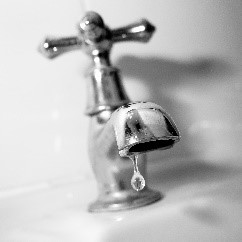
1. Check for water leaks
- Never underestimate a dripping tap, one drip of water per second equals to over 4,400 liters per year (4.4m3).
- Regularly check for leaks and fix any that you find. Use infrared technology or sub-metering to help detect leaks.
2. Wash equipment responsibly
- Washing a vehicle or piece of equipment with a hose rather than a bucket can use around 10 times more water.
- Soaking dishes instead of rinsing them under running water can also significantly reduce your water consumption.
- Small adjustments in daily washing routines can have a large effect on the end-of-the-year bill.
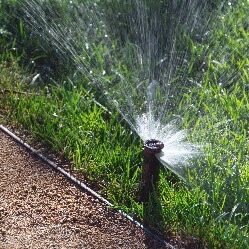
3. Pick irrigation time wisely
- Irrigating at certain times of the day can significantly increase water consumption.
- Try to irrigate early in the morning or in the evening to minimize unnecessary water evaporation and make the most out of the sprinklers.
4. Implement a water saving policy
- Encourage colleagues to reduce water consumption by following a water saving policy that involves everyone.
- Communicate (with supporting signs) to remind colleagues to use taps, showers dishwashers and other water consuming equipment, consciously. ,
- Actively involve colleagues at work to achieve savings together.
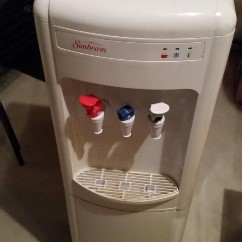
5. Use a water cooler for drinking water ($)
- It is unfortunately common practice to let water run from taps until it is cold enough to drink.
- Installing a water cooler can prevent this waste, as it is stored at the desired temperature.
- Consider energy consumption of water coolers when assessing the return on investment.
6. Use water meters
- Water systems will eventually leak.
- Using metering (and sub-metering) to detect wasteful water leaks before they become too significant.

7. Install water efficient technology in taps ($$)
- Flushing toilets can be surprisingly water intensive.
- Installing dual flush toilets can provide the ability for people to flush using less water; the smaller volume typically uses half the water compared to the larger volume.
- Use local awareness communications (and supporting signs) to remind people why they should use the smaller volume as much as possible to encourage water saving.
- Consider use of waterless urinals to completely cut water usage. Trial use of options first if necessary.
8. Install water efficient technology in toilets ($)
- Sensor taps can save lots of water and prevent people from leaving running taps when the water is not being used.
- Tap aerators and/or tap restrictors can also reduce water consumption by considerably decreasing the water rate.
- Aim to restrict general taps to 4.5 liters per minute or less.

9. Replace your water consuming equipment for higher efficiency versions ($$)
- Modern process equipment can use significantly less water.
- When opportunities arise, it is important to change out older water consuming devices, such as dishwashers and washing machines, for more modern equivalents to achieve greater water efficiency.
- Also pay attention to energy rating labels and always choose A-rated equipment to save both energy and water.
10. Recycle greywater when possible ($$)
- Consider use of recycling wastewater systems, or rainwater harvesting systems, to cut potable water usage.
- Look at any opportunities for flushing toilets, irrigation, vehicle washing, cooling, rinsing or even for cooling units and feeding boilers.
- Speak to specialists about opportunities and ideas.
|
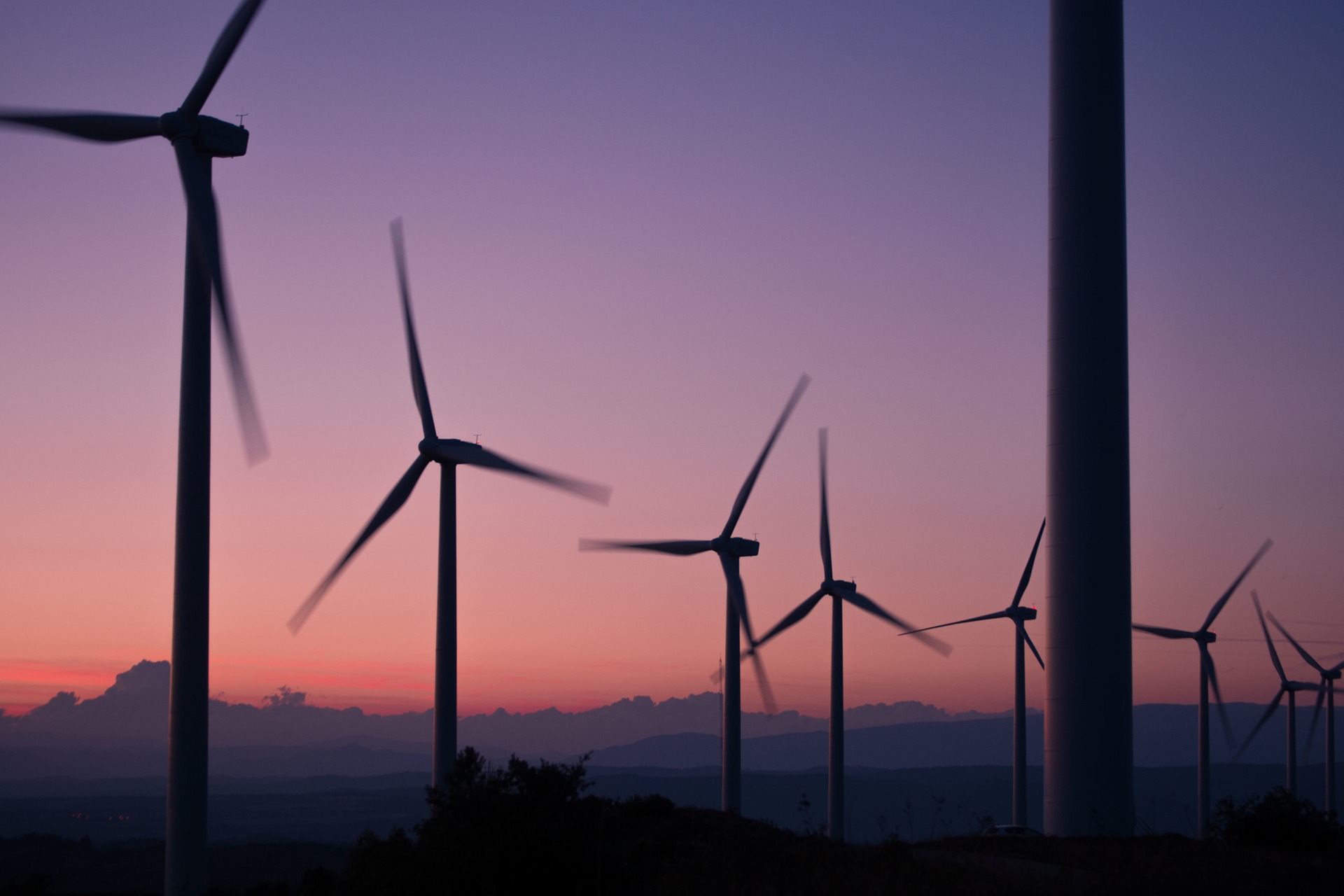
Low And Zero Carbon Technologies (LZC) can provide a more sustainable solution to conventional energy resources.
Organizations need to consider investing in greener energy and water supply technologies once they are making good progress in eliminating avoidable waste and improving system efficiencies.
Many of these technologies still need investment to become mainstream; organizations can support this by start adopting more LZC technologies to encourage innovation to speed up the transition to a zero carbon reality.
Doing so, can support local hearts and minds for an organization’s sustainability approach and activities.
Usually, these investments are much more capital intensive; however, the expected returns are positive if the projects are careful evaluated and implemented where they can make the biggest difference.
Increasingly more governments are also providing monetary incentives for organizations that employ LZC technologies.
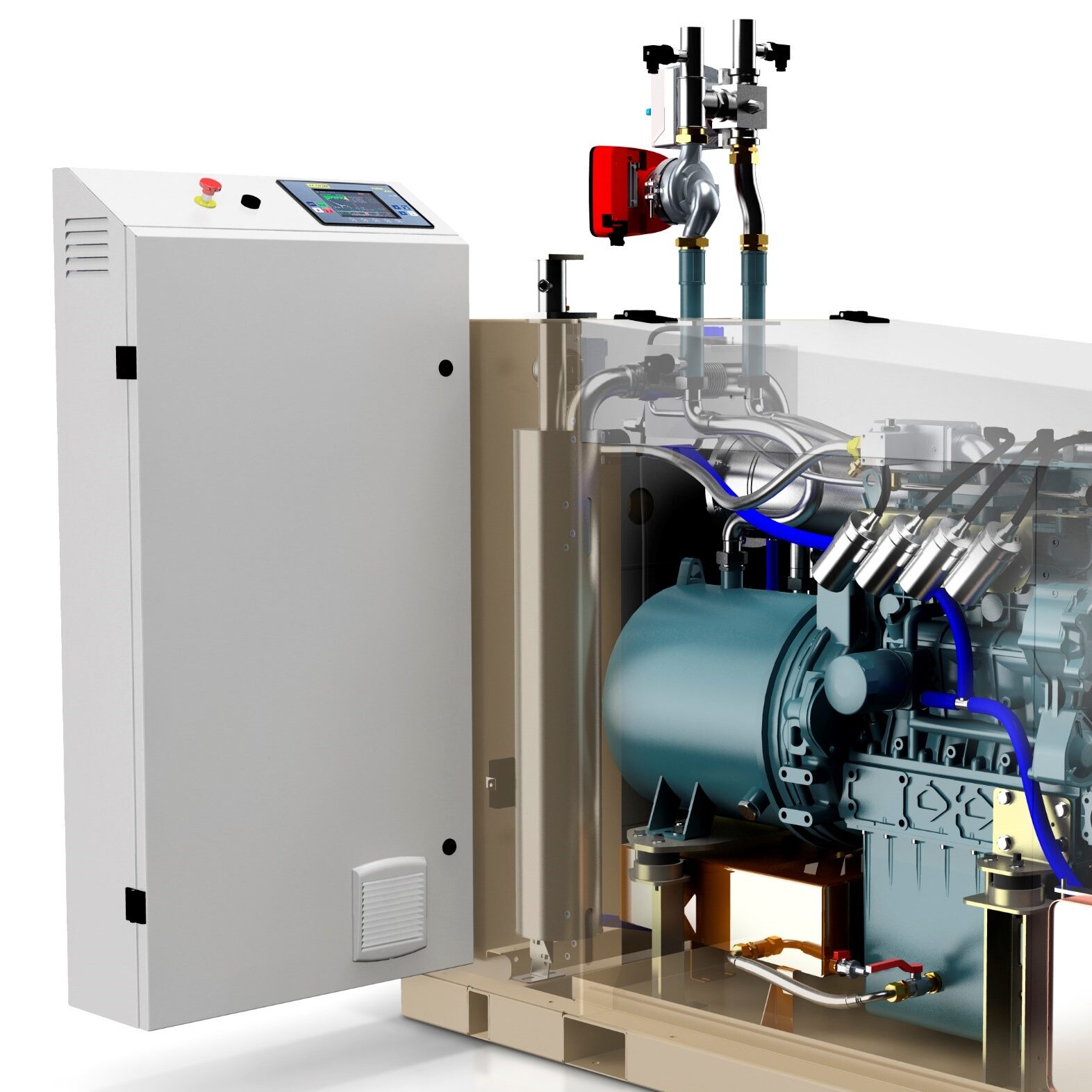
1. Combined heat and power, (CHP) ($$$)
- CHP, also called cogeneration, simultaneously produces electrical and thermal energy by recovering the waste heat, which can also provide additional space and water heating.
- Additional cooling is also possible by supplying the excess heat to an absorption chiller; this set-up is called tri-generation or combined cooling, heat and power (CCHP).
- CHP systems can increase the useful energy output to as much as 80% of energy input, compared to a typical maximum limit of 56% for more traditional systems.
2. Ground source heat pumps, (GSHP) ($$$)
- This system consists of a ground water circuit loop, a heat pump, and a distribution system to supply space heating, cooling or domestic or process hot water duties.
- The technology uses constant temperature from underground to significant increase the efficiency of the heat pumps used.
- The system relies of the supply of renewably generated electricity to be zero carbon.
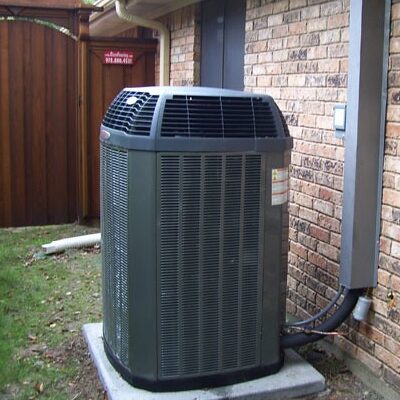
3. Air source heat pumps, (ASHP) ($$$)
- ASHPs use air-driven heat pumps to provide space heating and domestic hot water duties for buildings.
- These systems are typically much less efficient than GSHPs, particularly when air temperatures are low in winter.
- The system relies of the supply of renewably generated electricity to be zero carbon.
4. Mechanical ventilation with recovery, (MVHR) ($$$)
- Waste heat from a process integral to a building can also be considered as low carbon.
- For example, MVHR recovers the exhaust heat from a building to be used to preheat ventilation fresh air, retaining up to 90% of heat.
- MVHR is considered to be a very efficient approach, using very little energy, if combined with very high levels of building thermal insulation such as meeting the Passivhaus standard.
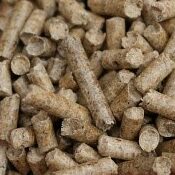
5. Biomass heating boilers ($$$)
- Biomass heating systems utilize the energy released from the burning of plant/ animal matter or agricultural waste to provide central space heating and/or domestic or process hot water heating.
- Modern biomass boilers are usually fueled by wood pellets or wood chips.
- Due consideration should be given the local supply, availability and storage of the biofuel concerned.
6. Super-efficient gas boilers ($$)
- High efficiency condensing boilers are also (sometimes) referred to a low carbon technology and zero carbon if fueled by biogas.
- Condensing boilers can typically convert over 90% of their fuel into useful heat, increasing boiler efficiency and minimizing energy losses.
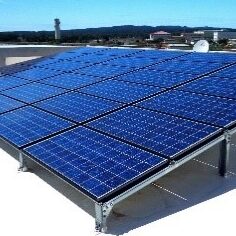
7. Solar photovoltaic (PV) electric panels ($$$)
- The cost of solar PV panels has significantly reduced in recent years; it is now more economically feasible to use solar panels for many building types.
- PV utilizes daylight and sunlight to produce electricity.
- Locate the panels to maximize their exposure to make sure the investment is worth it.
8. Solar water heating ($$$)
- Solar thermal technology heat water collectors, typically located on the roof, using the sun
- The energy is then transferred to a hot water storage cylinder for use for domestic or process hot water duties, and sometimes for local space heating.
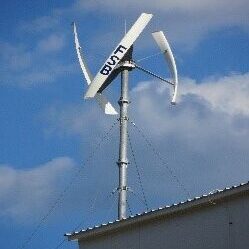
9. Wind turbines ($$)
- Wind turbines extract energy from the wind to generate electricity.
- Turbines typically work best outside of urban areas and – of course – in windy locations.
10. Community or district heating
- Look for opportunities of economics of scale, and/or diversity in load, to meet the heating requirements of multiple commercial, and local, buildings and/or processes.
- Using a local and inclusive approach to district energy supply, for example using CHP, can help improve the economics and accessibility to LZCT.
SUMMARY
There are usually always many opportunities we can all reduce our energy and water consumption and improve our sustainability performance.
This checklist, of the simplest ideas, follows the energy and resources to help ensure our approaches are as cost effective as possible; reducing demand first is not only lowest overall cost to reduce our carbon emissions but that also right sizes subsequent investments in LZCT.
If you would like to have a downloadable checklist for this, please contact us.
For more detailed ideas and opportunities for the different categories, see our smart saver check lists covering lighting, process, HVAC systems and others.
I hope some of these ideas are of help to you.

Written by Monica Landoni

